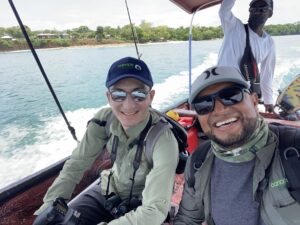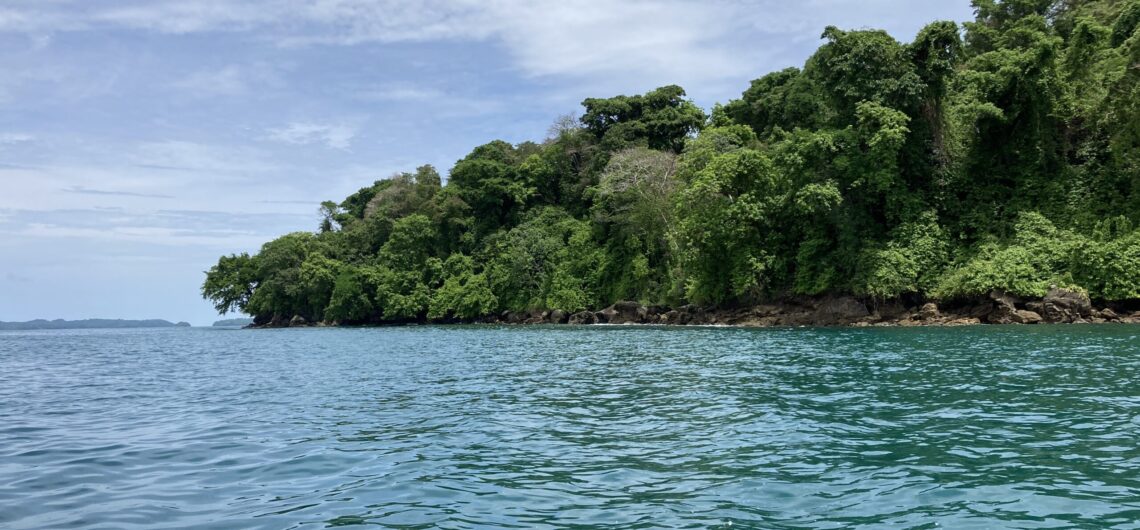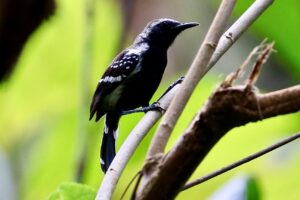Tropical islands are unique and valuable ecosystems characterized by high levels of endemism. In Panama, multiple groups of islands form important biodiversity and endemism hotspots, including the Pearl Islands archipelago, located around 48 km (~30 miles) from the mainland in the Gulf of Panama, in the Pacific Ocean. It is formed by 39 islands and around 100 islets, most of which are uninhabited and unexplored. These islands are renowned for their marine biodiversity, but are also a special place for whale watching, and an important nesting site for sea turtles and thousands of seabirds.
Interested in exploring the archipelago’s avifauna, Pedro Heilbron, the CEO of Copa Airlines, invited Canopy Family’s president and founder Raúl Arias de Para, our partner and head guide Carlos Bethancourt, and our collaborator Jonathan Slifkin to his home on Contadora Island, one of the most touristically developed of the Pearl Islands. From Contadora, they took a boat ride to Pacheca, a small island near Contadora, and Pachequilla, an even smaller island nearby, with the aim of photographing the seabirds and shorebirds of the area. Soon the idea of transforming the trip’s discoveries and photos into a small field guide was born. Therefore, Carlos and Jonathan made a return trip to take more pictures, and finally, in collaboration with Panama Audubon and the Canopy Family, and sponsored by Copa Airlines, a field guide to the ten most common seabirds and shorebirds of Pacheca and Pachequilla islands was produced. Recently, Carlos returned once again, this time to introduce the birds to the boat drivers from the area, so they can in turn show interested visitors. As an aside, the southern islands of this archipelago are known to harbor a unique endemic subspecies of the White-fringed Antwren (Formicivora grisea), which Carlos and Jonathan were able to find and photograph during their trip.

Jonathan Slifkin and Carlos Bethancourt during a boat ride at Pearl Islands. White-fringed Antwren (Formicivora grisea) subspecies at Pearl Islands.
Photos: Jonathan Slifkin and Carlos Bethancourt
Climate change, increased tourism, and global pollution are some of the biggest threats to the unique microclimates and ecosystems present in tropical islands. With this field guide, we hope to encourage low-impact tourism activities like birding in the Pearl Islands archipelago among boat drivers and visitors, which will help create awareness of the importance of the biodiversity of these islands and contribute to future conservation initiatives in the area. We are very thankful to Copa Airlines and Panama Audubon for helping us promote sustainable tourism with this collaboration. We also thank Rafael Lau and Eric Grossman for providing their amazing photos for the guide. You can find a pdf version of the guide in English and Spanish here!


